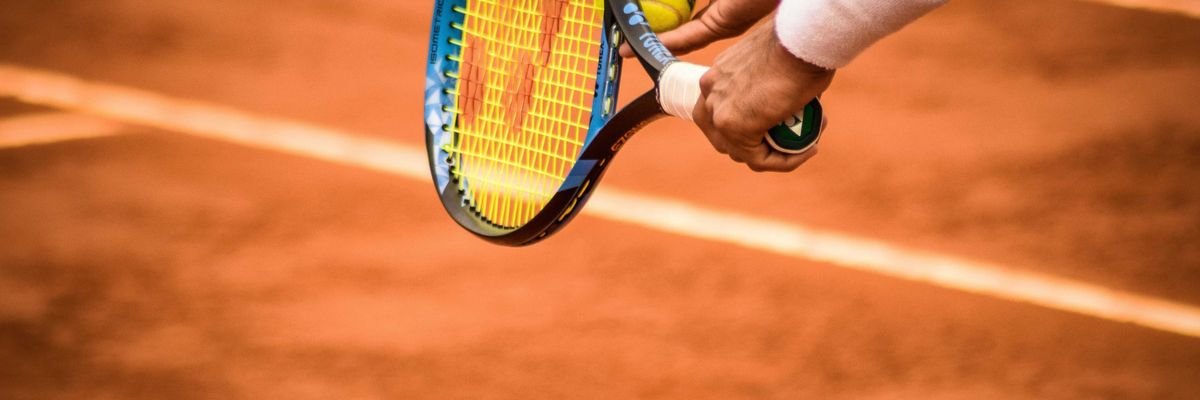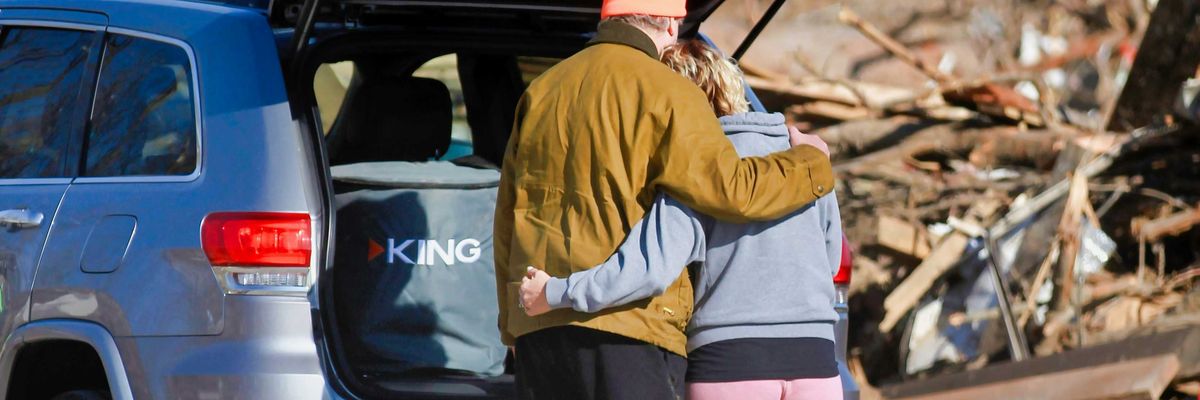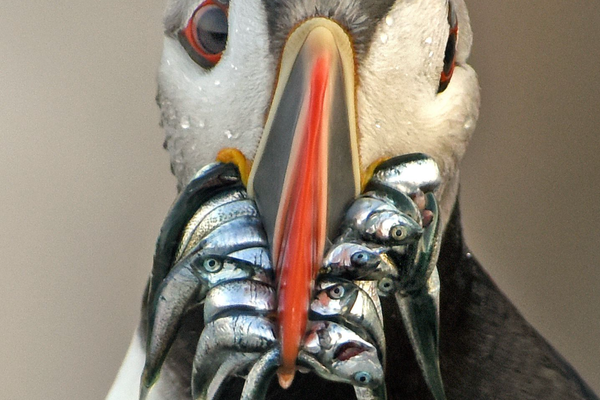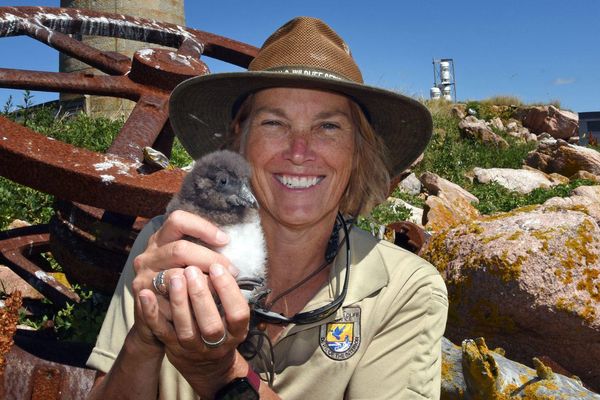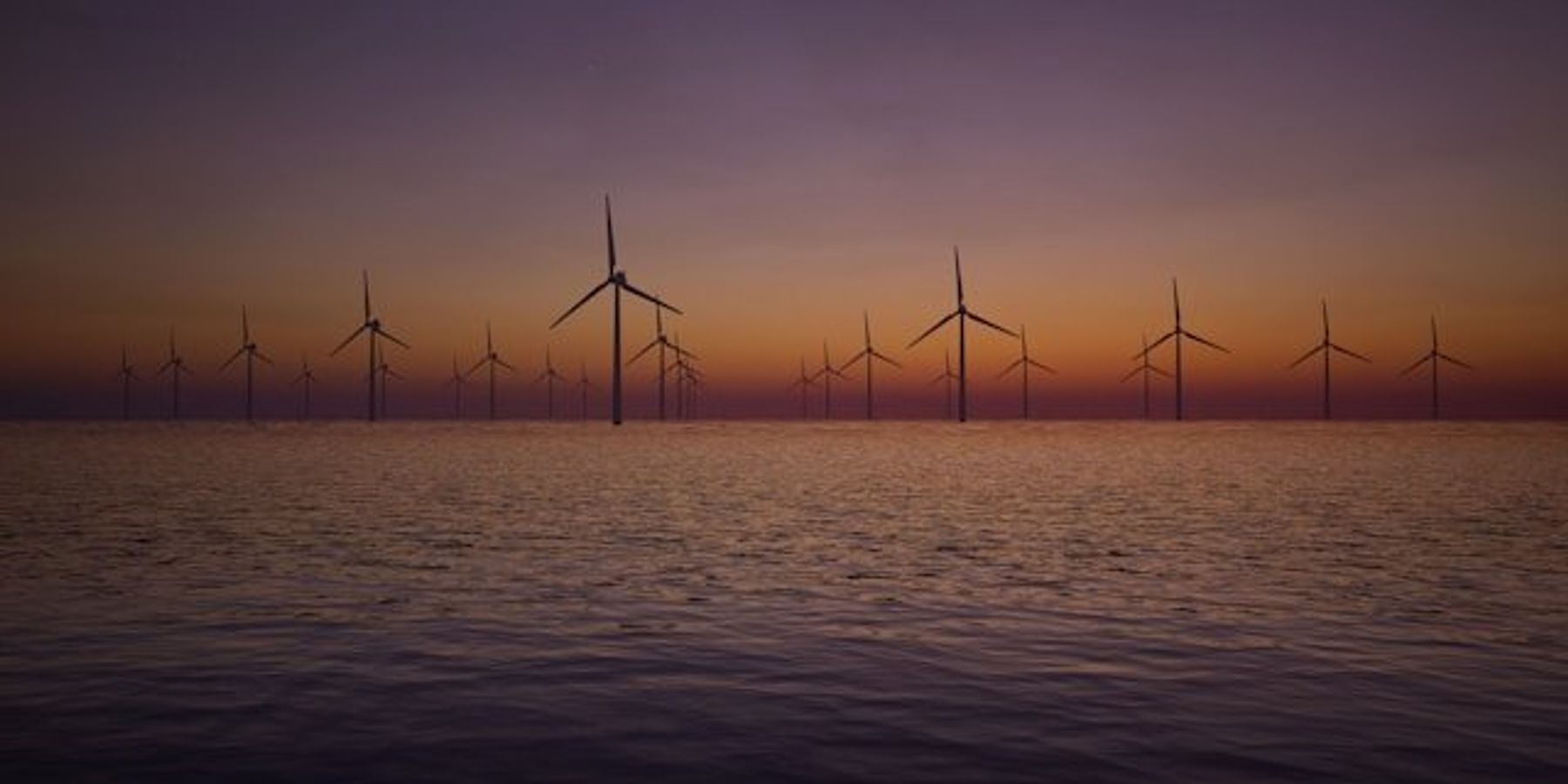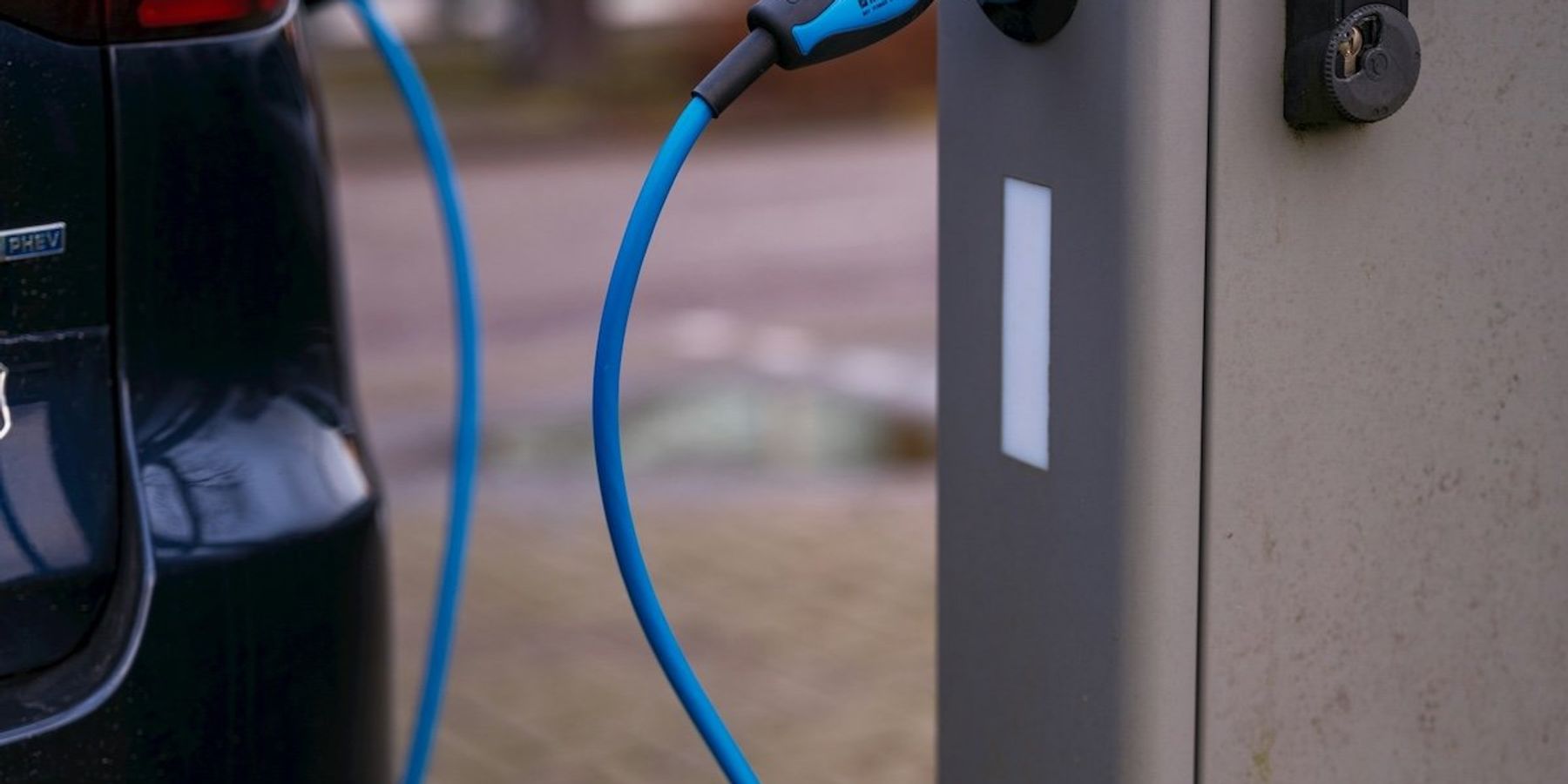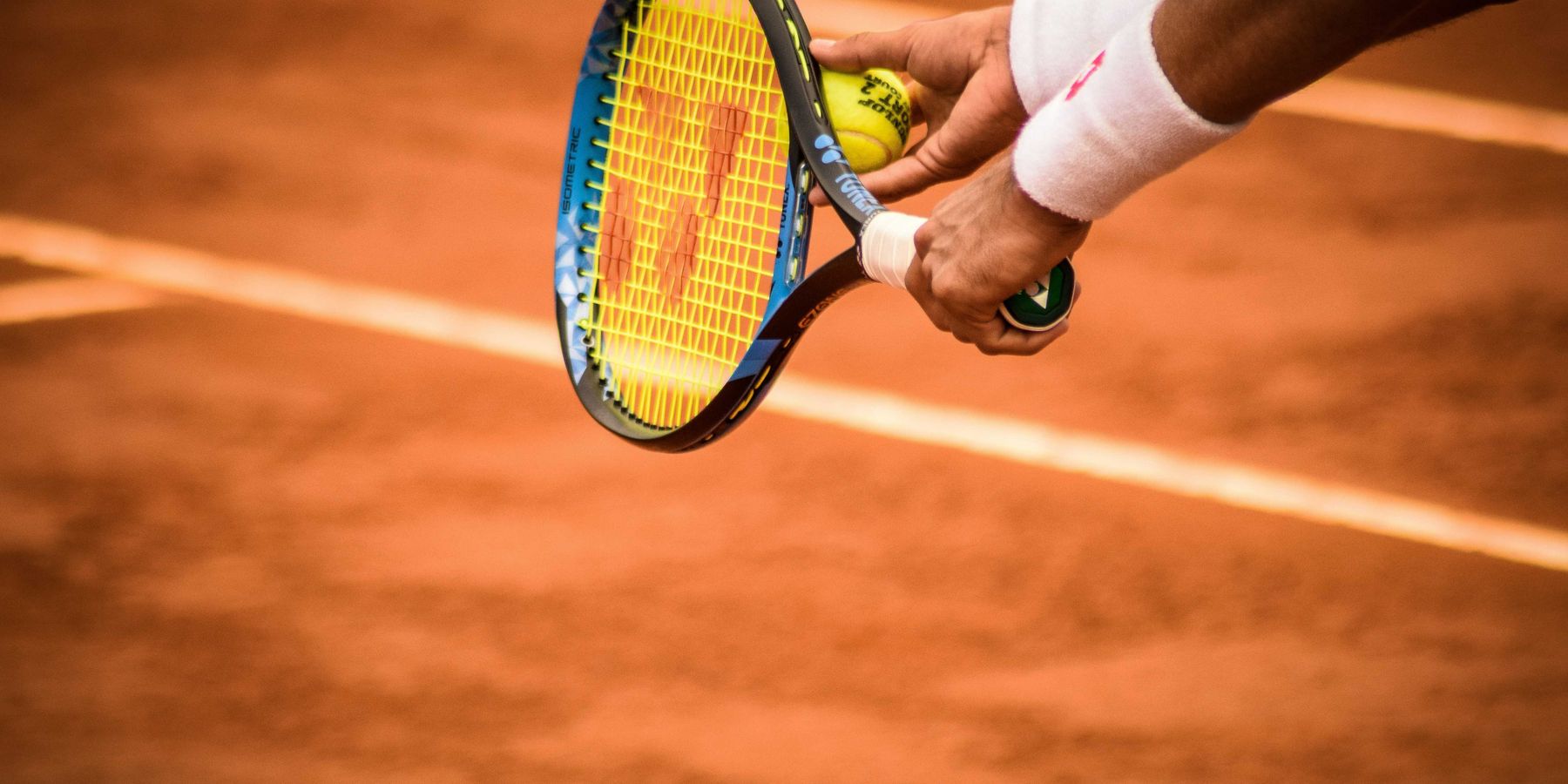puffins
Care for endangered seabirds continues amid a 51-year legacy of optimism
“There is this idea of healing the Earth ... perhaps there’s something about this project that captured that."
Steve Kress’s smile lit up the dusk as research assistants at least 50 years younger than him regaled him with tales of their vigilance to save tern chicks on Stratton Island, Maine.
For an hour, all talk centered around a mortal enemy of tern chicks: the black-crowned night heron. The latter is a beautiful, stocky wetland bird with glowing red eyes and two delicate white plumes shooting out the back of its head. A nocturnal hunter, lucky photographers can catch it at dusk or dawn along rivers and ponds snapping fish out of the water in a split second.
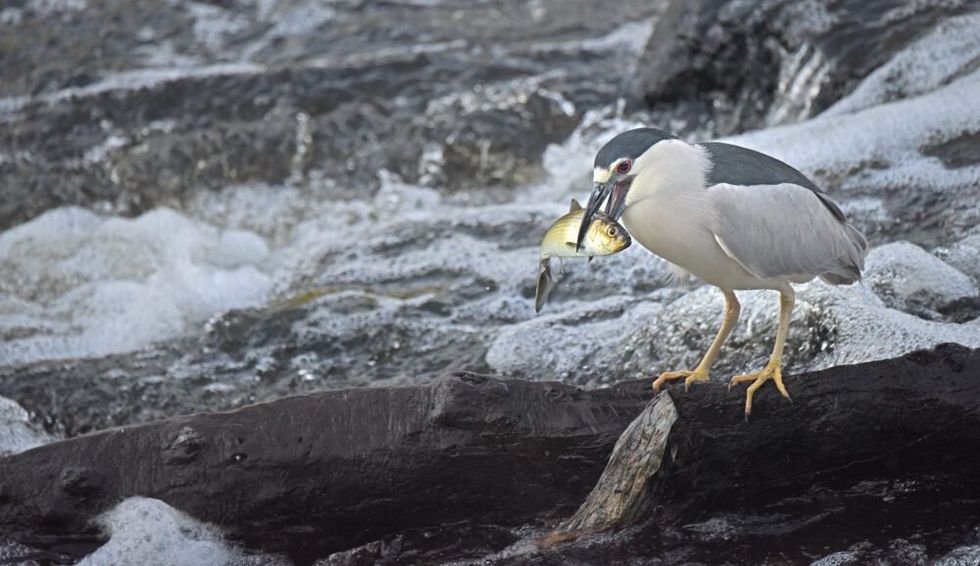
Stratton Island is three miles out to sea from Orchard Beach, Maine. The Audubon Seabird Institute, formerly known as Project Puffin, began restoring terns here in the 1980s. Kress founded the project in 1973.
On this island, in the dead of the night, the heron has other prey on the menu. It includes a precious colony of least terns, the smallest tern in the world, with a striking black cap and bright yellow bill. The tern was nearly wiped out on the East Coast in the late 19th century for hat feathers.
Despite their recovery from that slaughter —a recovery aided by the 1918 Migratory Bird Treaty—least terns are listed today as an endangered bird in Maine. It nests on sandy beaches, which often puts it in competition with human development and recreation. That fragility makes it critical to keep herons out of tern colonies as one heron can kill many chicks in hours. In 2022, just 14 chicks fledged out of 91 nests on Stratton. Last year, maybe four chicks survived to fledge off Stratton.
The team of Ben Becker, Kay Garlick-Ott, Tiffany Christian, Ellie Bretscher, Katelyn Shelton, and Joe Sweeney told Kress they are always “on edge” for the heron attacks and do everything possible to scare off herons. They use lights and lasers and make every kind of noise possible with bangers, screamers, and pot banging.
Kress chimed in that crews have also tried (in vain) to use a mannequin to startle the herons. There was one researcher years ago who dressed up as the action film character Rambo to hunt a heron that was terrorizing chicks. Another attempt to use lights to see herons resulted in federal authorities roaring out to Stratton in a boat, on a tip that it was a landing strip for drug runners.
Sadly, right after this visit, a heron evaded the crew and unleashed another lethal attack, reducing the number of least tern chicks from more than 60 to less than 20. The moment was symbolic of how Kress’s original vision for Project Puffin evolved dramatically over the years.
Protecting tern chicks from predators and other threats

All Kress had wanted to do a half-century ago was restore just one species, the Atlantic puffin, to Eastern Egg Rock, one small island off the coast of Maine. Puffins were hunted off nearly every island in Maine in the 1880s. Kress hoped that once he re-established the bird, with chicks translocated from Canada, it could maintain itself and that would be the end of the project.
He came to realize that breeding puffins and eventually other birds, such as terns, requires people to guard them for the entire 3 to 4 months of their breeding season. Whatever the ecosystem was centuries ago that allowed puffins and terns to thrive in Maine, now there are just too many threats. Some threats are other birds that thrive thanks to major conservation victories. For example, herring gulls, which also were slaughtered for hat feathers, recovered with the 1918 treaty. Bald eagles and peregrine falcons are flourishing again after the 1972 banning of the pesticide DDT. Other threats are tied to human sloppiness: Gulls went beyond recovery to crowding out other birds on Maine islands, boosted by banquets of coastal landfills and fishing waste.
It may all be part of a larger struggle of birds competing for dwindling habitat in the face of development, climate change, pesticides, industrial agriculture, and pollution. A 2019 study in the journal Science found that North America has lost more than a quarter of its bird population since 1970; there are nearly 3 billion birds less than there used to be.
“I had no idea we would face this complexity of the ongoing need for management,” Kress said. “It’s a myth that islands are separate from everything else. We can’t walk away from [the restorations], or they would eventually unravel.”
Passing on the torch at Project Puffin
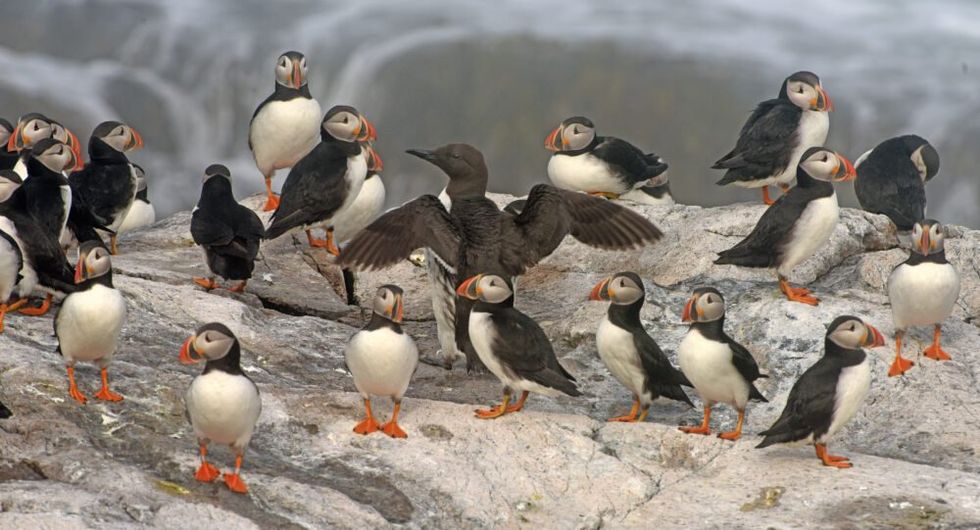
They have not unraveled. The project has had at least 700 research assistants. At 28 years old, Becker, Garlick-Ott, and Christian are the same age that Kress (now 78) and his colleagues were when they started Project Puffin 51 years ago. The half-century age gap punctuates the success of Kress effectively sharing his vision with young researchers and entrusting them to carry out the mission. (That is exceedingly elusive in other spheres. For example, a 2008 Harvard Business School paper estimated that 4 of every 5 founders or co-founders are eventually forced out as CEOs. The long list includes founders or co-founders of Apple, JetBlue, Tesla, Zipcar, Twitter, Uber, PayPal, OpenAI, and Yahoo!.)
“It’s a myth that islands are separate from everything else. We can’t walk away from [the restorations], or they would eventually unravel.” - Steve Kress
As Kress’s co-author and photographer on two books about Project Puffin, this aspect, the passing on of the founder’s torch, has enthralled me as much as the birds. Garlick-Ott, a former island supervisor who studies tern aggression on Stratton for her doctorate at the University of California Davis, said, “You get a quick sense that the torch is constantly being passed. It’s empowering and humbling at the same time. I feel like I have a purpose and a place in this project. When I became a supervisor, I wanted so badly to do what my supervisor did. I really wanted to be like her.”
Keenan Yakola, 31, is in his 11th summer with Project Puffin and the Seabird Institute. A former island supervisor and now a doctoral student at Oregon State University, he leads the GPS tagging of puffins, terns, and storm petrels to study where they feed. The Gulf of Maine is one of the fastest warming seas on Earth. He hopes the tracking will indicate how seabirds adapt to ocean heatwaves and help offshore wind developers site facilities to avoid conflict with birds.
Yakola said he learned early on that Project Puffin patiently welcomed innovation by college-age assistants. Perhaps that was because Kress himself almost did not get the chance to restore puffins. At first, a top Canadian official balked at the idea that Newfoundland puffin chicks would return to Maine as adults. Even after getting permission, it took eight years until Kress, then an Audubon camp bird instructor, reestablished puffin breeding on Eastern Egg Rock. His first artificial burrows for chicks were too hot or they flooded. The puffin chicks he raised in 1973 and 1974 disappeared into the Atlantic, never to be seen again.
“My first summer on the project, I didn’t feel I had a particular contribution to make other than to be a good intern and collect data,” Yakola said. “I just thought it was cool being with birds. But when I asked about analyzing diet data for my undergraduate thesis [at the University of Massachusetts Amherst], Paula [Shannon, the institute’s seabird sanctuary manager)] simply said, ‘Yeah, sure. Just ask Steve.’”
Shannon, 48, a former island supervisor who first began working with the project in 2002 and co-authored a 2016 paper with Kress showing how puffin diet was changing with the warming Gulf of Maine, seconded Yakola. She talked about how crews kept repositioning common murre decoys on Matinicus Rock until the first egg in more than a century was laid on that island in 2009. A cousin of the puffin, common murres, were also hunted in the 1800s until there were no breeding pairs left in Maine. Last year, a dozen murre chicks fledged off Matinicus Rock.
Kress once asked Shannon and others a question about an extinct bird.
“What would you do if a Great Auk showed up with the puffins?” he said.
She laughed and replied to him, “We’d probably take a picture and send the bird on its way because no one would believe us.” The question was both in jest and a suggestion that trying new things can have unforeseen victories in science.
The Great Auk indeed will never come back, but Kress’s restoration of puffins and murre have helped conservationists all over the world bring back seabirds from the brink of extinction. One or more of the methods used by Project Puffin, such as the translocation of chicks, decoys, taped bird calls, and mirrors, have now been used in more than 850 projects in 36 countries to restore (or relocate from danger or competition with other animals), 138 seabird species. Some restored species were thought to be extinct, such as the Chinese crested tern.
Sue Schubel, 62, has been associated with the project for most of the last 40 years. In 1996, she advised the placing of murre decoys, mirrors, and recorded calls atop a northern California sea stack. A colony of 2,900 breeding murre had been wiped out by an oil spill a decade earlier. The day after decoys were installed, murres returned and began breeding again.
Affectionately known as Seabird Sue, current research assistants say they are inspired by her ceaseless energy. She is an assistant sanctuary manager, decoy project manager, a logistics expert for all the boats that get crews, provisions and gear on and off the islands, public educator, and artist. When she first joined the project, she herself fed off the sense that “everybody was willing to do everything for the birds.”
A culture of caring for the birds, for each other
Kress and Schubel came out to Eastern Egg Rock this summer to see what has become of his original project island. The crew of supervisor Theresa Rizza, 28, and assistants Arden Kelly, 25, Coco Deng, 19, Camryn Zoeller, 20, and Anson Tse, 27, said they know they are in a special world.
“This is an island and project of hope,” Zoeller said. “The fact that this project is a success is a reason to not get distraught about all the destruction all around us.”
Rizza added, “The puffins are proof that as long as someone wants to try, good things can happen.”
Arden said, “You really see the can see the passion that is still in their eyes. You want to be your own Steve Kress.”
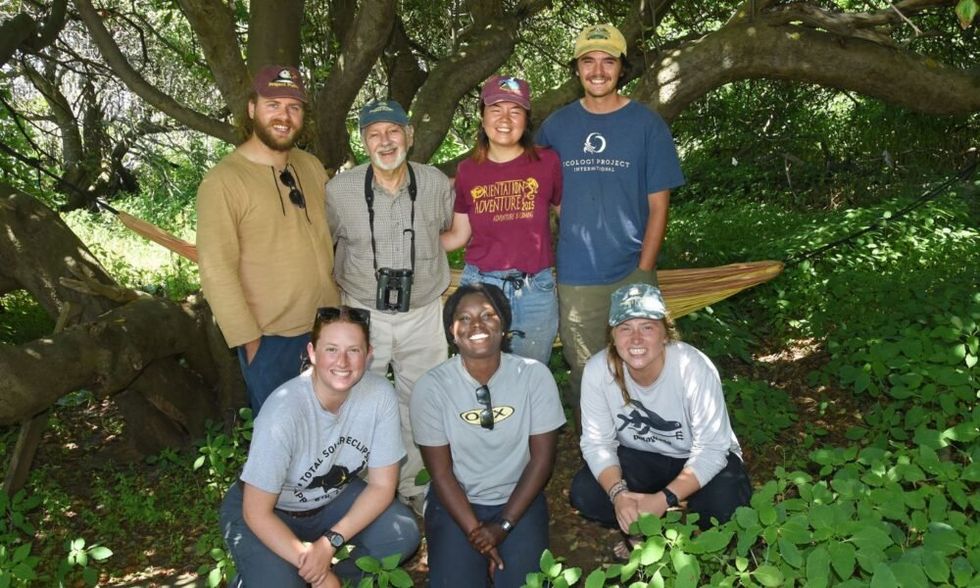
The sentiments were echoed 32 miles away in the Gulf of Maine out on Seal Island, another island where puffins were restored after a century’s absence. The crew there consisted of supervisor Coco Faber, 30, and assistants Amiel Hopkins, 19, Liv Ridley, 26, Reed Robinson, 19, and Nacho Gutierrez, 24.
“This is an island and project of hope. The fact that this project is a success is a reason to not get distraught about all the destruction all around us.” — Camryn Zoeller
Faber, in her ninth summer with the project, has seen some of the most volatile years of boom and bust for seabirds with the warming Gulf of Maine. “With climate change, the threats feel so amorphous and big, it’s hard to know where to go,” she said. “There are no more normal years. I now wonder every summer, what am I going to witness. When I [feel] down, I think of Steve and all his optimism, and how he threw spaghetti at the wall to bring these birds back.”
Ridley added, “They say one person can only do so much,” Ridley said, “But here, with [Kress’s] legacy you know you’re carrying on. You’re inspired to say I’m going to give my life to seabirds.”
Kress retired from the project in 2019, handing it over to Don Lyons, a tern researcher from Oregon State. Lyons said Kress left behind “community and continuity” that he could not find a comparison to.
“Steve is very focused on thanking people for their contributions,” Lyons, 59, said. “That includes a new researcher who lugged a boat up onto rocks or other seemingly menial tasks like data entry. It makes people feel valuable.”
So valuable that back on Stratton Island, Tiffany Christian, who lives the rest of the year in the Chicago area and is in her first summer on a Maine research island, said the magic of being surrounded by seabirds on an island was like being in “an ornate castle built in the sky.” She said the project’s legacy and the camaraderie “gives me a new awareness of what I want to do in the future.”
Kress himself said he did not intentionally set out to pass on a culture of such caring, but as it turns out, he looks at that culture as the “greatest hope” for seabirds. “Wherever I go, China, Ecuador, I see the same type of person,” he said. “There is this idea of healing the Earth. I sure didn’t create that, but perhaps there’s something about this project that captured that.
“It helps that this project is such a conspicuous success that people are today surrounded by come-back birds, baby birds, all this life. I hope that future generations of seabird stewards continue this amazing story. You can’t avoid the feel-good part of it. I don’t need to say anything. The birds constantly remind the researchers that they are part of a miracle.”
Read more about Puffin Island and the efforts to save seabirds in Maine here and here.
This post originally ran on The Union of Concerned Scientists blog and is republished here with permission.
Protecting seabirds will provide broad benefits
Puffin nesting sites in western Europe could be lost by end of century
The majority of puffin nesting sites in western Europe are likely to be lost by the end of the century due to climate breakdown, a report has warned.
Solving the climate crisis will help both ‘sacrifice zones’ and ‘cute’ puffins
Curbing pollution for families in Chicago calms the climatic conditions that drive fish away from puffins half a continent away.
When I tell bird-loving audiences what puffins mean to me, I start with the expected.
I show my photos of them either with fish in their orange, yellow, and blue-black beaks, gathered in kaleidoscopic multitude, or nuzzling in affection. I always get oohs, ahhs, and a choral, “sooooo cute.”Then I show images that are not so cute.
They are of mothers and children of southeast Chicago, with toxic industries at the end of their block. They live in what environmental justice advocates decry as “sacrifice zones.” In the last decade alone, this primarily brown and Black community has suffered choking clouds of dust from oil refining byproducts, lead in lawns, and neurotoxic manganese dust in the air. Just last month, the Department of Housing and Urban Development blasted an attempt to relocate here a scrap metal recycling facility ousted from the predominately white north side. HUD said it was an example of “shifting polluting activities from white neighborhoods to Black and Hispanic neighborhoods.
Environmental justice
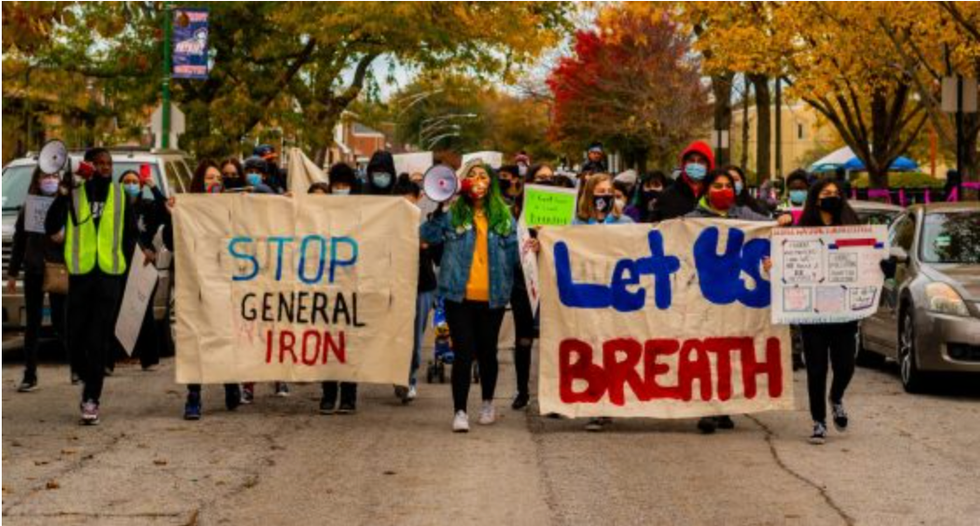
Activists march to stop an industrial metal shredder from relocating half a mile from two public schools in Southeast Chicago.
Credit: Chicago Teachers Union
I then give the audience a glimpse of the shift that should be happening. I show images from my coverage of offshore wind farms and facilities in Europe. I show them families of color from San Diego to Washington, D.C., who enjoy rooftop solar power through various programs. I show them Black and brown workers in the green economy, installing solar panels on roofs.
I then return to puffins. I say if you really care about the threats to them and whether they’ll be around for our grandchildren and great-grandchildren, then you must care about those families in southeast Chicago. Like thousands of birdwatchers, my journey with puffins began with simple admiration of a beautiful bird. Today, I see that their destiny is directly bonded to dumped-on families. They are bonded to the speed we curb the fossil emissions that scorch the planet and sear the lungs.
Puffins come back
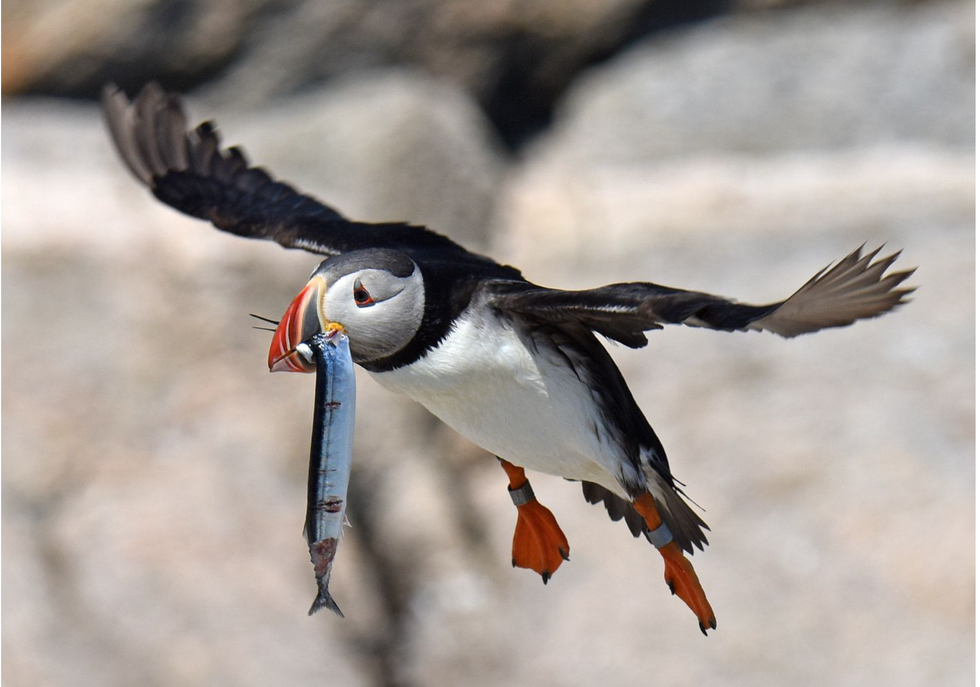
A puffin takes flight
Credit: Derrick Z. Jackson
My first story on Atlantic puffins was 36 years ago for Newsday, where I reported from Eastern Egg Rock, a tiny 7-acre island 6.5 miles out from Pemaquid Point in Maine. The rock was the site of the world’s first restoration of a seabird to an island where humans killed it off.
It was almost a fairy tale. Puffins were slaughtered off the island in the 1880s for meat and eggs. Nearly a century later, Steve Kress, a young summer camp bird instructor for the National Audubon Society, got it in his head to bring them back.
Beginning in 1973, he and colleagues brought chicks from Newfoundland more than 800 miles away. They fed them until they fledged into the Atlantic. Kress hoped that years later, when puffins seek islands to breed, they would pick Eastern Egg Rock instead of Newfoundland. To make the birds feel at home, his team put up decoys and mirrors.
Climate change warning
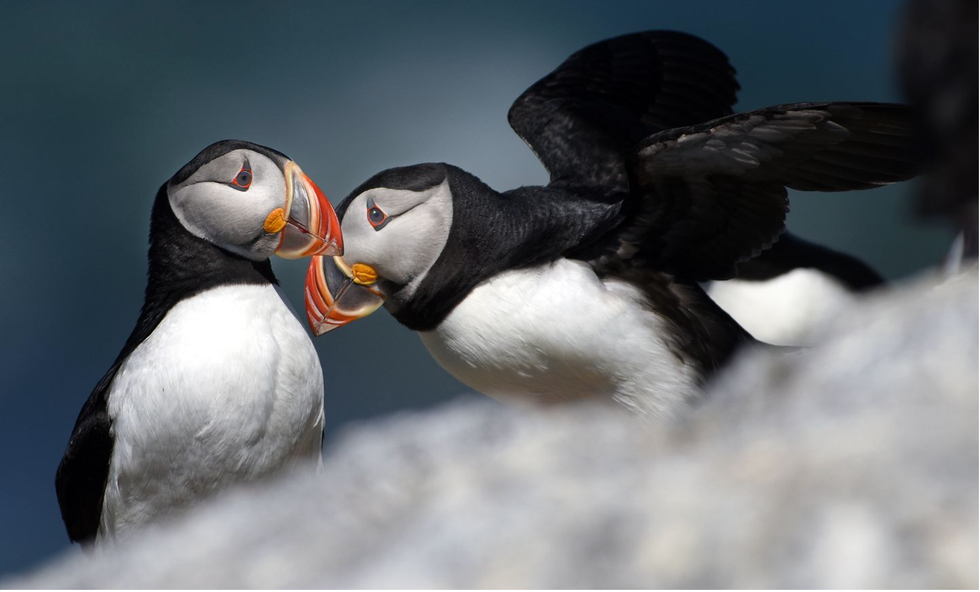
A pair of puffins at the Gulf of Maine
Credit: Derrick Z. Jackson
Kress succeeded. Puffins returned and began breeding in 1981. During my 1986 visit, I contributed to the cause by spotting a puffin zoom in off the ocean with herring in its mouth for a chick. The parent disappeared under a boulder to a nest not yet charted. Kress considered my discovery a big deal as the nest count in those days was still under 20.
Today, the bird is 1,300 pairs strong in the Gulf of Maine and an economic engine. Last year, 20,000 people circled Eastern Egg Rock on tour boats for a glimpse of the bird. But the fairy tale is now a drama. A symbol of what we can restore from 19th-century destruction, puffins are now a canary of 20th- and 21st-century self-destruction. Climate change is making these waters perhaps the fastest warming major body of ocean on the planet, as the Gulf Stream strengthens against weakening currents coming down from the Arctic.
Resilient puffins
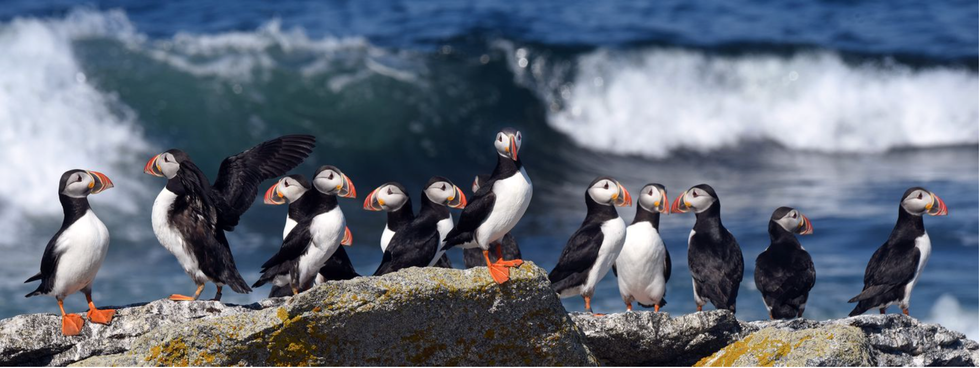
Credit: Derrick Z. Jackson
Last year was a nightmare with the warmest waters on record and intense storms also associated with a warming planet. Warm water drove the fish puffins and other seabirds need to feed chicks too deep or too far out to catch. Relentless rain triggered hypothermia. Between starvation and shivering, seabird islands were a climate war zone, with bird carcasses everywhere and some of the lowest chick productivity recorded by researchers.
Conversely, this current summer brought calmer weather conditions and plentiful fish. It was a reminder that there is still a chance of a forever-ever-after. In a recent conference call, researchers in the Gulf of Maine Seabird Working Group reported record numbers of tern species across many islands and a rebounding of puffin nesting. In my visit to the islands, I held a symbol of resilience in my hands, a puffin chick being raised by a 33-year-old parent. The parent is one of the last-known puffins that was plucked off Newfoundland as a chick and hand reared by Kress’s team.
'Injustice anywhere'
The question now is whether we assist such resilience with a resolve to cool their waters. It requires the same effort needed to preserve ourselves from deadly heat, storms, floods, desertification, and the daily soot shortening our lives. As one who covers many angles of the environment, formerly for the Globe’s editorial board and currently for the Union of Concerned Scientists, I no longer see a distinction between traditional notions of environmentalism and environmental justice.
Curbing carbon pollution for families in Chicago calms the climatic conditions that drive fish away from puffins. Every new wind turbine and solar panel installed is one less mountain of fossil fuel waste fouling city blocks and rural rivers and one less set of emissions inflaming the ocean. With the majority of the under-18 population now people of color, the conservation world by necessity must recruit new caretakers for puffins and threatened species from communities living with Superfund sites, lead poisoning, and asthma-causing particulates. That surely would spawn a new generation of environmentalists who cease to make distinctions between the climate threats to animals and us.
Just as Martin Luther King Jr. wrote nearly 60 years ago that “Injustice anywhere is a threat to justice everywhere,” stopping climate change for people on land saves puffins at sea. The puffin fairy tale can still have a happy ending, if we realize we’re all in the same sacrifice zone.
This story was originally published in the Boston Globe and is reprinted here with permission of the author.
Derrick Z. Jackson is co-author and photographer of Project Puffin and The Puffin Plan. He is a fellow at the Union of Concerned Scientists and a frequent contributor to Environmental Health News and The Daily Climate.
Good news: A good year for puffins and terns, despite climate change
A visit to a remote Maine island finds puffins and terns rebounding despite climate change
The title of supervisory wildlife biologist for the United States Fish and Wildlife Service does little justice to Linda Welch (pictured above). In practice, she is the housing and unusual development secretary for seabirds on Maine’s Petit Manan Island.
This was clear as she led me to nesting areas there for Atlantic puffins. Over the last half century, the bird has been restored from the brink of extinction in Maine, the only state where it breeds. Petit Manan is located about 20 miles east of Acadia National Park and is part of the Maine Coastal Islands National Wildlife Refuge.
The island has a shortage of “housing stock” that other puffin havens in Maine do not. On those other islands, breeding puffins enjoy the privilege of nesting year after year in the same burrow under massive boulders that probably have not shifted for centuries.
'Everything got smashed'
Petit Manan is not so blessed. The rocks around its rim are often much smaller. Puffins can still nest under them. But winter storms easily scramble them and obliterate burrow openings. Already an annual headache for a bird that is loyal to its nesting spot, the rearranging of rocks is now a figurative migraine as climate change from the world’s burning of fossil fuels intensifies rain, wind and crashing waves. During the last decade, one set of storms slashed the number of burrows from more than 90 down to 52.
“We had lot of burrows on the east side of the island three years ago,” Welch said. “Now they’re all gone. In the past we’ve always lost a few burrows to storms. But beginning with some storms in 2012, it’s become frustrating. Even this year, which is turning out to be a good year for seabirds, it’s been difficult. In March, we went out to look at the burrows and everything looked perfect. Then a huge storm came in April, and everything got smashed.”
Puffin burrows
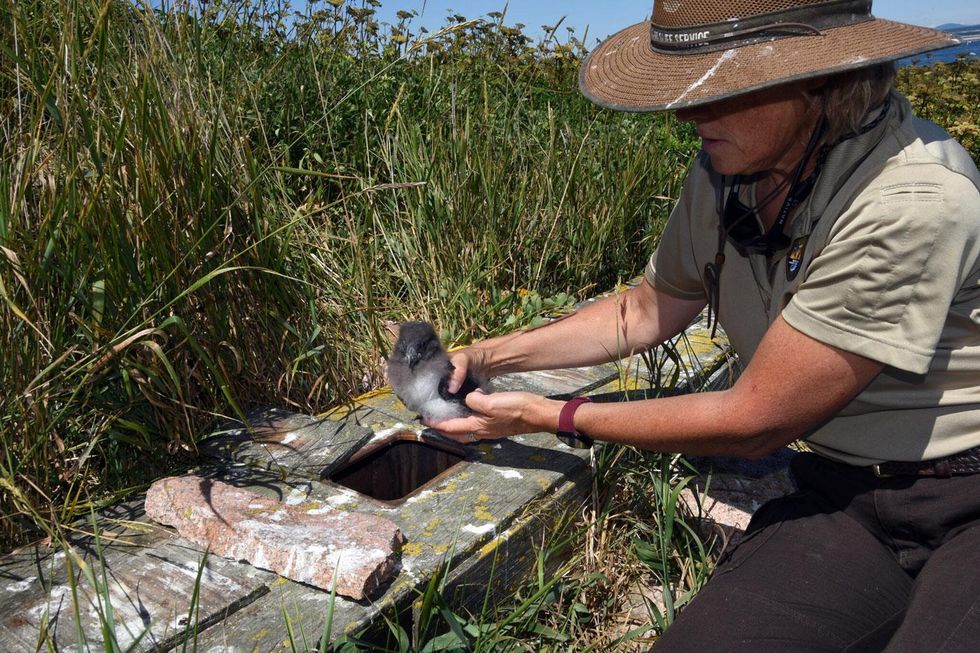
Biologist Linda Welch places a puffin back inside one of the “condos” she built to promote successful breeding.
Credit: Derrick Z. Jackson
Given the fragility of puffin burrows and nature’s increasing fury, Welch 55, and a 25-year veteran of the the Maine Coastal Islands refuge, has long schemed of ways to build artificial burrows with every material possible to give puffins an inviting place to nest. She and her colleagues have tried bricks and chimney liners. She has tried flowerpots and corrugated pipe for septic systems. She has tried burying culvert pipe and plastic tote buckets and tunneling pathways through sod for the birds to get up and into her contraptions.
She covers them up with rocks and soil to make them look as natural as possible. Anticipating rising seas and longer reaches of reaches of tides and waves driven by storms, she has been moving artificial burrows higher up the island, so high that some puffins are nesting amid the twisted ruins of dwellings for lightkeepers.
“I go to Home Depot with my calipers and sit on the floor and measure materials to design puffin burrows and tern traps,” Welch said. “Initially, they thought I was a weirdo, but it’s a small Home Depot so the people got to know me and say, ‘She’s OK, she’s just designing tern traps.’ I keep believing in the idea of ‘if we build it, they will come.’ You try to be creative and keep improving the burrows, such as digging deeper in the soil to keep the birds cooler. As we continue to tweak our designs, we get to a more natural experience for the birds.”
Today, a third of burrows on Petit Manan are artificial. Among the most impressive was the most obvious. She walked me to a long wooden box. It was one of four puffin “condos,” rows of compartments on top of the soil with burrow openings lined were corrugated pipe dug underneath. They had removable covers for researchers to inspect the health of puffin chicks. Welch opened a couple and both times pulled out plump chicks that were about ready to fledge.
“Initially, I had a philosophical debate about whether to build burrows and intervene on the puffins’ behalf. Puffins want to be here, but the habitat is not great. But there are puffins on so few islands, every island we can attract them to feels important.”
Puffin success
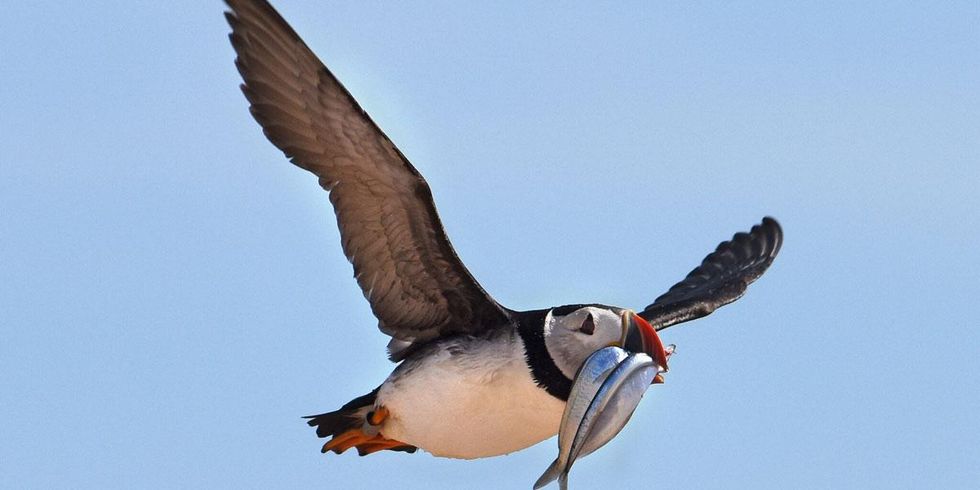
A puffin brings its chicks fish on Maine's Petit Manan Island.
Credit: Derrick Z. Jackson
Petit Manan is important because it represents a unique and encouraging lesson in puffin restoration. The bird was slaughtered for its meat and eggs by coastal communities in Maine in the late 19th century. By 1902, only a single pair of puffins clung to existence on Matinicus Rock, an island 25 miles out to sea from Rockland, the nearest major town on the mainland.
In the early 1970s, Steve Kress, a young bird instructor at National Audubon’s Hog Island summer camp, ran across a 1949 book that said puffins bred in “considerable numbers” off multiple Maine islands in the 19th century. He set about to recreate that spectacle.
Starting with Eastern Egg Rock, a small, seven-acre island six and a half miles off Pemaquid Point, Kress worked with the Fish and Wildlife Service to control voracious gull populations that would have made restoration impossible. Beginning in 1973, he and colleagues began bringing down hundreds of 10-day-old puffin chicks from Newfoundland. They hand raised them on Eastern Egg Rock until they fledged out to sea.
Puffins stay out to sea for two or three years until breeding instincts kick in. Kress gambled that when the chicks became adults, they would pick Eastern Egg Rock over Newfoundland as home.
He guessed right. They began breeding in 1981 and today there are more than 1,300 pairs of puffins across several islands, mostly across Eastern Egg Rock, Seal Island and Matinicus Rock. What became known as Project Puffin was the world’s first restoration of a seabird to an island where humans had killed it off.
Abandoned tern homes
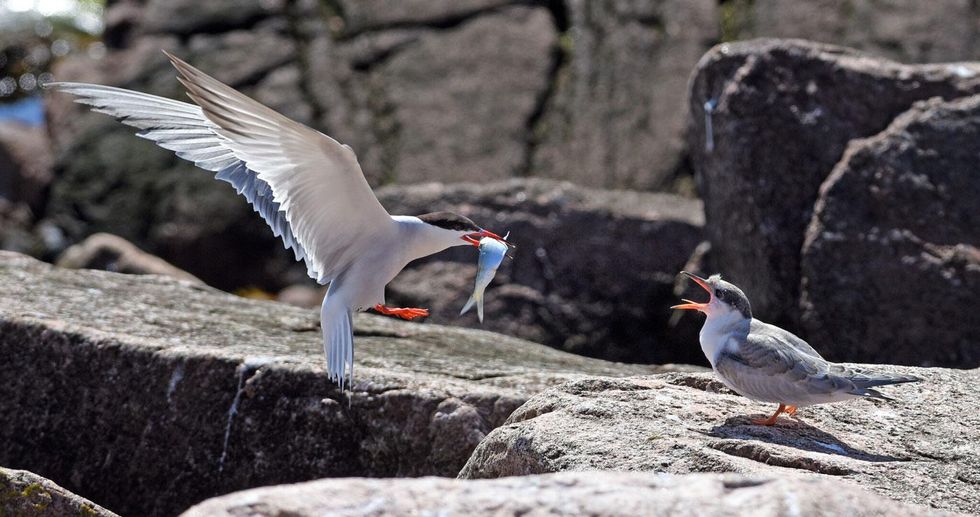
A common tern brings a large juvenile herring to its chick.
Credit: Derrick Z. Jackson
The presence of puffins on Petit Manan was a happy accident. There is no historical record of puffins ever having bred on that island. In the 1960s and early 70s, it was home to 1,500 pairs of common, Arctic and roseate terns, Maine’s largest tern colony. But the Coast Guard’s automation of the island’s lighthouse abruptly ended a human presence that had been incidentally protective of terns by keeping gulls at bay. After automation, herring and great black-backed gulls overran the island. By the late 1970s, terns abandoned their colonies.
In 1984, the Fish and Wildlife Service began to control gulls by removing nests and placing poison sandwiches on nests. Just one week into the program, terns begin returning and created a new colony of nearly 1,000 pairs. The calming of the island for terns was so successful that 13 puffins crashed the party and began to successfully breed chicks in 1987. By 2009, a record 104 pairs of puffins bred on Petit Manan, along with more than 2,500 pairs of terns.
That arrival of puffins was likely because of a phenomenon observed with the success of Project Puffin. The screeching and divebombing of terns, meant to dissuade predators such as gulls from swooping down to gobble chicks, also seemed to act as a protective cover for puffins to come onto the islands to prospect for burrows, hatch eggs and bring fish to their chicks.
“If we give nature the opportunity, birds will take advantage,” Welch said.
Giving birds a chance
Trying to give nature the opportunity never stops on Petit Manan. As on many seabird research islands in New England, a team of young conservationists at the beginning of their careers live on them during the height of breeding season—from late May until early August—to monitor the health of the birds and combat any dangers that emerge.
There are prescribed burns and constant weed pulling to keep tern habitat from being choked. Several times even during my three-day stay on the island, the crew would make as much noise as it could to shoo away peregrine falcons—a species also rescued from extinction—from preying on terns and puffins.
Then there are laughing gulls. A colony last year built more than 800 nest in the same area as terns, threatening to crowd out the latter. Laughing gulls also try to harass terns and puffins into dropping the fish they bring onto the island for their chicks. This summer, island supervisor Hallie Daly, 25, a graduate of wildlife conservation at the University of California Davis, led her crew on a mission to destroy gull nests and give the gulls second thoughts about setting up shop on Petit Manan by firing off pyrtechicas and hoisting up dead laughing gulls on poles. “We went from 800 gull nests to four nests,” Daly said. “We hopefully saved 20 to 30 tern nests by doing that. Every nest counts.”
This summer, there was an avian flu scare that likely killed dozens of tern chicks and forced the shooting euthanasia of five great black-backed gulls which displayed the loss of body control associated with the virus. “One bird was just rolling over itself,” said Nick Giordano, 25, a graduate of wildlife science at the State University of New York in Syracuse. “It was really rough to witness. It’s so hard to shoot a beautiful animal. But we couldn’t let the disease spread.”
Fortunately, avian flu did not sweep through New England this breeding season in the way that it tore through gannet, skua and tern colonies in Europe and gannet and murre colonies in Atlantic Canada. This summer was also a relief from the roller coaster of climate change. The puffin islands of Maine, as well as Machias Seal Island, an island of between 5,000 and 6,000 breeding pairs of puffins that is administered by Canadian wildlife researchers, all sit in the Gulf of Maine, the fastest-warming body of ocean on Earth.
The effects of global warming on Petit Manan have been as dramatic as on any island. Besides the aforementioned “redecoration” of rocks from storms, water that is too warm drives the fish puffins and terns catch to feed chicks either too deep to find or so far out that parents are exhausted, and chicks are underfed, triggering starvation.
A decade ago, when summer surface water temperatures reached record highs, Petit Manan’s breeding puffin count was more than halved, from the 104 pairs in 2009 to 47 pairs in 2013. Then last year, when Maine recorded even a higher level of record water warmth, puffin and tern breeding was a disaster. Only 13 percent of common tern chicks fledged, compared to nearly 61 percent in the record puffin nesting year of 2009.
Cooler waters
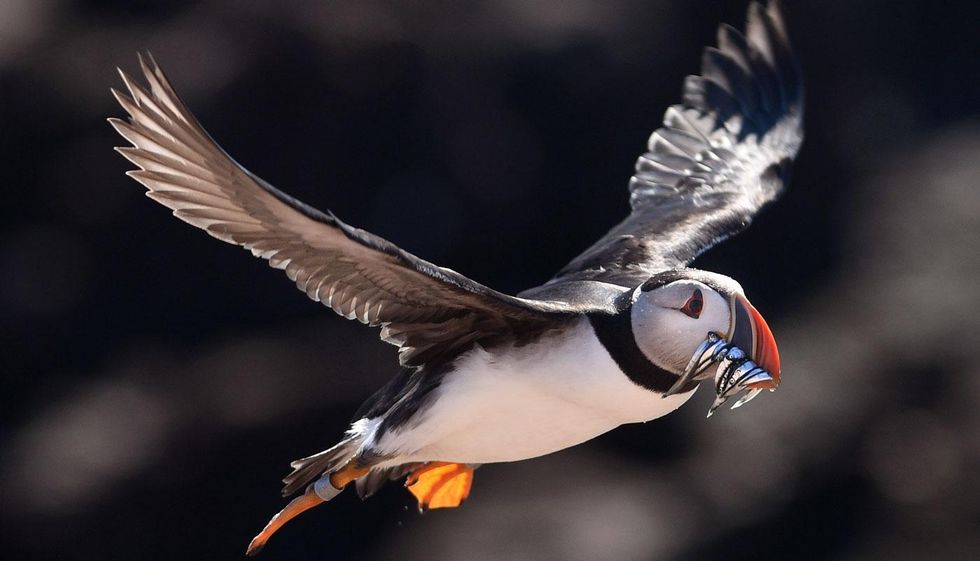
A puffin flies a meal back to its chick.
Credit: Derrick Z. Jackson
This summer, relatively cooler waters have resulted in a breeding bonanza of 93 puffin burrows with 73 chicks hatching. As the research team took me around to investigate puffin burrows and pulled out healthy chick after healthy chick, the caretakers’ broad smiles told the story. “It symbolizes that we are not yet at the point of no return,” Daly said. “We’ve had so much doom and gloom that nothing can be done and this is proof that it can. One of the adults we’ve recaptured was a bird I banded as a chick in 2019. That is the proof.”
Similarly, Jill Tengeres, 29, who has periodically worked summers on Petit Manan and studied Aleutian terns for her masters degree at Oregon State, talked of a bird she recaptured that she banded as a chick 10 years ago. “You get this warm and fuzzy feeling,” Tengeres said. “I’ve seen some bad years where we were down to 40 puffin burrows and dead tern chicks all around. But they still keep coming back. To see their resolve is amazing.”
Also helping to manage the island this summer were Tasha Gownaris, 35, an assistant professor of environmental studies at Gettysburg College, and two of her students, Kaiulani Sund, a 21-year-old senior, and Jehan Mody, a 21-year-old junior. Gownaris has studied Magellanic penguins, fisheries in Kenyan lakes and the importance of forage fish for commercial fisheries and ecosystems.
For her, to see the varieties of nutritious fish being brought this summer by adult puffins and terns to their chicks was nothing short of thrilling. Last year at the peak of water warmth, puffins often brought only tiny hake or butterfish, a species more traditional of the mid Atlantic, which is too oval for small chicks to eat. Terns often brought insects.
Hake, herring and haddock
This year, puffins were bringing in beak loads of thick, juicy hake, herring, haddock and sand lance several inches long. Both puffins and terns were even bringing in Atlantic saury, a fish as long and thick as a school ruler. Gownaris said seabird chicks were growing at double the rate of last year. She, Sund, Mody and Giordano all remarked how terns will need that fill of fish for their first winter out to sea. Common terns often head to tropical coasts as far south as Argentina and Peru. Arctic terns that breed in the Gulf of Maine may have 20,000-mile migrations that may take them around South Africa into the Indian Ocean and between the tip of South America and Antarctica before returning to places like Petit Manan. One 35-year-old Arctic tern was estimated to have traveled 2.3 million miles in its lifetime.
Giordano said that the fortitude of the birds is all the more humbling when he reads a band on a tern perching on a rock and realizes that it was hatched 20 years ago, or records the return of a puffin that is nearly 30 years old. Project Puffin has seen one puffin make it to 35 years old. “When you hold that band,” Giordano said, “You wonder what that bird has seen. Sund added, “When you hold a bird that travels like it does and it looks into your eyes and you look into its eyes, I constantly wonder what is going on it its mind.”
Mody added, “These birds fight so hard for themselves, we have to fight for them.”
The team and Welch all hope that the “we” who fight for the birds becomes all of us, as climate change from the burning of fossil fuels threatens all their building of artificial burrows, tending to the weeds and scaring off predators. “Until about 10 years ago, the normal cycle was many good years with a bad year here and there,” Welch said. “Now we’re in a situation of multiple bad years and then a good year that is still not a great year.
“When you’ve been here to see thousands of chicks starving to death in a bad year, it’s hard not to think of the consequences if this is the new normal. Every spring I get incredibly anxious, worrying about how many bad years can they take before this is the year they don’t come back. We don’t have the luxury of waiting to do something on climate change. It’s happening all around us, right now.”
Until that day happens, you can find Linda Welch, the secretary of puffin housing and development, on the floor at Home Depot, trying to build a burrow.
Puffins and other seabirds are dying because of climate change
I stepped onto the battlefield of climate change, sidestepping carcass after carcass. In the grass were the remains of Arctic terns, common terns, and roseate terns.
Scientists need your puffin pictures to help save the species
If you have taken a trip to see Scotland's puffins in recent years then you could be of vital help to scientists trying to support the threatened little seabirds.


